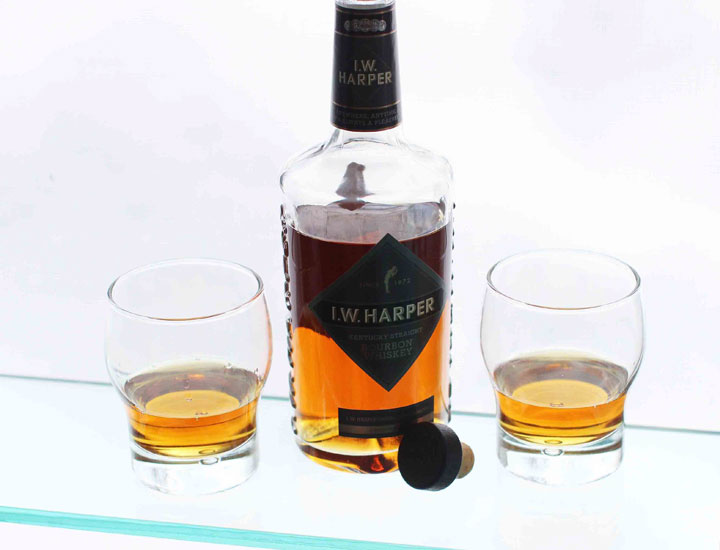I.W. Harper would like very much to be the next Pappy Van Winkle, that cultishly popular bourbon that sets the liquor world alight and commands thousands of dollars per bottle.

And it isn’t alone. Just about every American whiskey of a certain calibre is chasing the dream, and they all use roughly the same formula. Craft a story to go with your spirit, toss in some scarcity and moderately high prices, then hope to get noticed and ride the bourbon boom to fame and fortune.
So I’ll be blunt. I.W. Harper is not going to be the next Pappy Van Winkle. But for those of us unable or unwilling to shell out that sort of cash to knock one back, this is a good thing.
That’s because I.W. Harper – launching this month by liquor giant Diageo in 4- and 15-year-old iterations – offers the full package: a compelling story, a great sip, just enough scarcity to make it desirable without being unattainable, and a price that sets it apart without putting it out of reach. Let’s break it down.
—
THE STORY
If you only came of drinking age since the ’90s, chances are the I.W. Harper name doesn’t mean much. That’s around the time it disappeared from the U.S. market. Remember, this is back when only your grandparents were drinking whiskey (and probably bad whiskey). So I.W. Harper pulled out of the U.S. and focused on Asia. Twenty years on, whiskey is the new vodka, so I.W. Harper is coming back.
—
IN THE BOTTLES
This isn’t quite the same I.W. Harper from back in the day, but Diageo American whiskey “ambassador” Doug Kragel says it’s awfully close. “We’re fortunate enough to have in our possession a lot of whiskey from the New Bernheim Distillery (in Louisville, Kentucky) that can go into this whiskey, which was a huge part of the original I.W. Harper.”
The 4-year bourbon is an 82 proof easy drinker that is distinctly sweet and creamy, thanks largely to a mash bill of 73 per cent corn. It’s an everyday bourbon, fine for mixing, but nothing amazing.
Focus instead on the 15-year, which sports 86 per cent corn for an almost fruity, lightly sweet, particularly smooth whiskey. And you still get some bold character hidden in there, thanks to a nice hit (6 per cent) of rye. At 86 proof, it’s a fine sipper and savors nicely. And with a $74.99 suggested price, that’s how you’ll want to drink it. Despite being roughly twice the price as the 4-year, this is the better value.
—
ON THE SHELVES
The 4-year will be available just about everywhere. The 15-year? Not so much. Kragel says that secondary markets (those of us in the sticks) likely will get only a few bottles.
With all that in the mix, why won’t the 15-year I.W. Harper be the next Pappy? It’s not for lack of quality. This bourbon is a pleasure to drink. But Pappy-ness requires people to clamour for a bourbon. I.W. Harper is relying too much on nostalgia to trigger that. And anyone under 40-something – and those are the folks driving the bourbon boom – aren’t going to be nostalgic for it (because many of us were still drinking Capri Sun).
That’s a good thing. Those of us looking for a great whiskey at a fair price finally stand a chance. Assuming we can find a bottle.

Comments